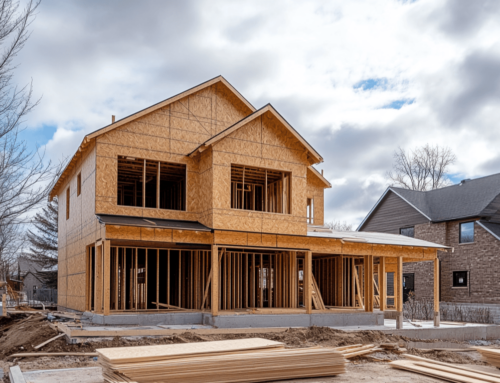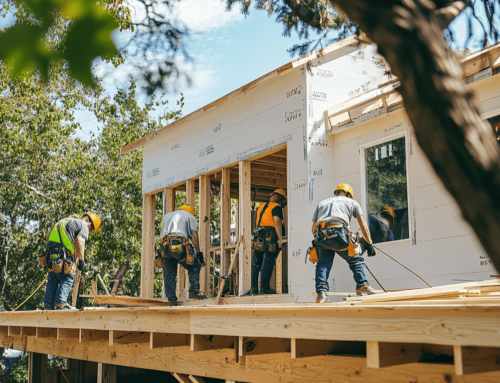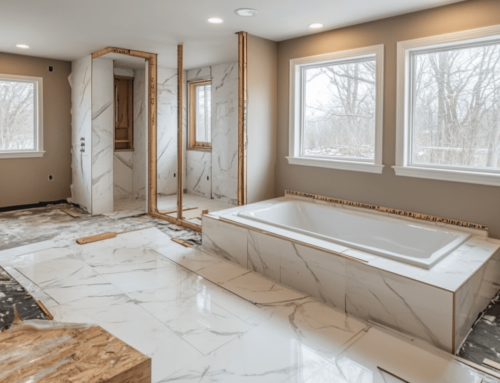Remodeling a kitchen sits near the top of the list of home renovation projects for many homeowners — for good reason. A new kitchen can be more attractive, more convenient, and allow you to put your personal touch on one of your home’s most important rooms. It can also significantly increase the value of your home and make it more attractive to buyers.
But you’ll only get the most value out of a kitchen upgrade if you do it right. Falling short on some key considerations can lessen the benefits a renovation provides.
To help you get the most out of your project, we wanted to highlight the most common mistakes people make when they remodel a kitchen. In the following article, you’ll find the list we created based on our experience renovating kitchens in North Carolina. You’ll also find out how to avoid them.
7 Common Kitchen Remodeling Mistakes
A kitchen renovation can be a complex job, with lots of things that can go wrong. But there are seven mistakes we’ve seen much more often than others.
1. Underestimating Cost and Time
Unless you’ve remodeled a kitchen before, it can be hard to estimate how much the project will actually cost and how much time the project will actually take. There is often more that goes into the job than people think.
You may be aware of some of the major costs of renovating a kitchen, such as new appliances, building materials, and decorative features. However, there are other costs that factor in — and can add up quickly.
Kitchen remodels require materials like new lumber, grout, spackling, wiring, plumbing, just to name a few. There are also labor costs to consider. In addition, cleanup and removal services can add more than expected to the final bill.
It’s also easy to underestimate how much time remodeling a kitchen can take. Like any renovation project, many of the bigger parts of the job like installing new countertops or a backsplash don’t actually take up the most time. Often, the finishing work like sealing in tile or installing cabinet hardware can take just as much, if not more time than the big jobs.
How To Avoid Underestimating
The most reliable way to estimate the cost of a kitchen renovation is to get an actual estimate from a contractor. However, if you want to estimate the project cost before you talk to a professional, consider the costs of all of the new appliances and features you want. Then, add 50% of that cost to the figure. This won’t be a precise estimate but it should put you in a realistic range.
Similarly, your contractor should provide a general estimate of the time to complete the project. In any case, the time it takes to remodel a kitchen depends greatly on how much work you want to do. It also depends on how fast the contractor works. If you know someone who has completed a similar remodel, they can provide insight into the length of the process.
2. Forgetting About Storage Space
In the excitement of adding new appliances and giving your kitchen a facelift, it can be easy to overlook your storage needs. However, not building enough storage into your kitchen can make it a pain to use. It can also limit the value the upgrade adds to your home.
How To Avoid Overlooking Storage
A good contractor will ensure that storage is among the many considerations for the renovation. But it’s still a good idea to work it into your plan yourself.
Take account of your storage situation. Is it adequate right now? If not, you’ll need to figure out where you can build in more storage. Even if it is, consider that people tend to build up more things over time and you’re likely to need more storage at some point in the future.
3. Not Considering the “Work Triangle”
Kitchen renovation contractors use the term “work triangle” to describe the relationship between the stove, sink, and refrigerator. That’s because people go between these areas constantly while working in the kitchen.
People sometimes fail to consider the need to move between work areas in the kitchen. As a result, the new design can make it inconvenient and frustrating to cook and clean.
How To Avoid Overlooking the Work Triangle
Take the time to think about how you will move in your kitchen during the design phase. Be sure to avoid putting any obstructions like attached counters in the work path if possible. You should also plan in enough space to move while at each workspace, being mindful of where appliance and cabinet doors need to open, especially.
4. Picking Appliances Last
Many people think of the aesthetics of their remodeled kitchen first and then look for appliances to fit into the plan. This can lead to improper planning for how you will actually use those appliances, leading to a kitchen that doesn’t function as well as it could.

How To Avoid Poorly-Fitting Appliances
New appliances are typically one of the biggest costs of a kitchen remodel. They are also where the functionality of your kitchen comes from.
We advise thinking about your kitchen from the perspective of how you will use it first. From this perspective, you can choose appliances that fit your lifestyle and needs. Then, you can design outwards from those appliances and still get the look you want while also ensuring your kitchen works for you in a practical sense.
5. Ignoring Lighting
Good lighting makes a huge difference in any room, but perhaps in the kitchen more than any other. You need strong lighting for your workspaces to help you cook and clean properly. But you’ll likely want softer, gentler lighting for when you’re not working in your kitchen.
Poor lighting can reduce the attractiveness of your kitchen. That can make it less enjoyable to spend time in — or even difficult to work in. This can also limit the visual appeal for potential buyers, making it harder to get maximum value out of your home.
How To Avoid Bad Lighting
Consider that you’ll need a well-lit kitchen while you work in it. Make sure you have ample lighting in all the working areas of the room. It’s also generally a good idea to have bright lights for areas you want to keep clean.
You’ll also want to think about secondary lighting — or, a lighting setup for when you dine or simply gather in your kitchen. The bright lights you use for working can be unpleasant when you don’t need them.
Also, be sure to consider natural light, too. Avoid blocking off light from windows and doors with cabinets or appliances.
6. Using Cheap Materials
It can be tempting to choose cheaper materials to save a few bucks on your kitchen renovation — especially once you see the costs starting to pile up. But kitchens are spaces that get a lot of use and a lot of traffic. Cheaper materials are often less functional and less attractive.
You probably won’t actually save money in the long run, either. Inexpensive floors, countertops, and other materials tend to wear out more quickly than higher-quality alternatives. This can mean you’ll have to replace those materials again in just a few years, negating whatever savings you may have had in the first place.
How To Avoid Low-Quality Materials
Take the time to research your material options thoroughly. A less expensive countertop, for example, may indeed not be as durable as a pricier option. But sometimes it isn’t.
Different materials have different qualities that make them better suited for some applications than others. If your materials budget is limited, prioritize parts of your kitchen that get the most use, such as the countertops or floors.
This is one area in which your kitchen renovation contractor can provide a lot of insight. They’ve seen a lot of kitchens, and can help you figure out where you need to spend on high-quality materials and where you can get by with a cheaper option.
7. Choosing the Wrong Contractor
The person or company doing the work on your kitchen makes a huge difference. A contractor who is sloppy with their work or lacks attention to detail can leave you with subpar results, or even a whole slew of new problems to solve.
Another issue you may run into is the money aspect of a kitchen remodel. Some contractors will try to squeeze as much money out of a job as they can, instead of offering you a fair price for their work. Others may hand you a final bill that’s substantially higher than their initial estimate.
How To Pick the Right Contractor
Vetting your contractor takes a little time and effort, but it is always worth it. Online reviews can give you an idea of how reliable a contractor is and the quality of their work. A few bad reviews here and there are normal, but consistent patterns of bad reviews are a serious red flag.
Look for examples of a contractor’s work. Many will post photos or even videos of previous jobs on their website.
It’s also a good idea to shop around a bit. Getting a few estimates and comparing can help you find the best price. This allows you to find the contractor that offers the ideal balance of cost and quality.
Avoid Mistakes and Get the Kitchen You Want
A kitchen renovation done well can be life changing. As a focal point of any home, a nice kitchen is a joy to work and socialize in. It can also dramatically increase the price at which you can sell your home.
Avoiding the mistakes listed above can help ensure that your kitchen remodel is everything you hoped for. A good contractor will see to it that you don’t overlook anything, and don’t pay more than you need to.





